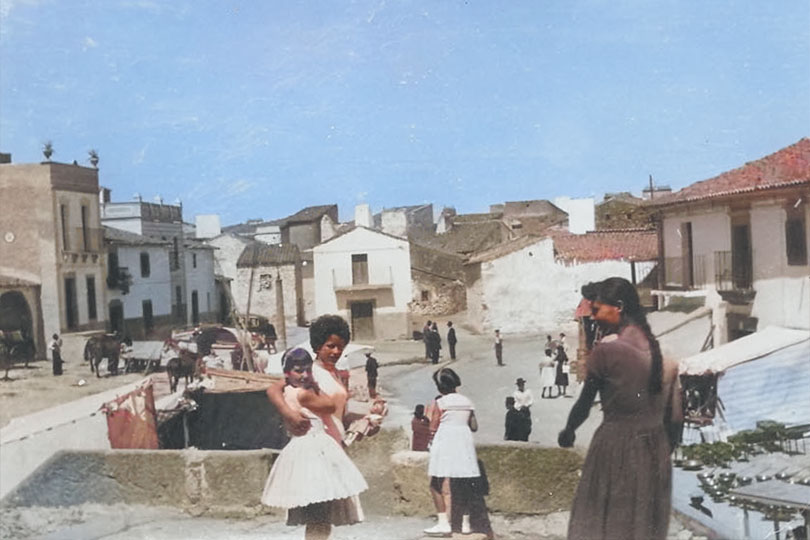Valdefuentes and
its History
It is not easy to determine from what remote antiquity there are traces of human life in this place. However, various findings, such as flint axes and utensils from the Stone Age, suggest that there may have been a primitive human group permanently settled very close to the current location of the town, with an organized way of life.

Historical photograph of Valdefuentes
There was intense Roman colonization in the surrounding areas, as evidenced by the many funerary steles of Norbanos, which spread along the banks of the Salor River towards the “Vallis Fontium” (or Valdefuentes location), among other remains that have been discovered and preserved to this day. There are also some vestiges that prove the subsequent Muslim settlement as a population center. This is the known Gurumeña neighborhood, a small group of houses with a narrow and winding urban structure, dead-end alleys, covered streets, and small squares.
Little is known about this neighborhood other than its dependence on San Marcos de León as part of the Order of Santiago until it became a Royal Village, sold by the Crown (Philip II) to Don Álvaro de Sande, the 1st Lord of Valdefuentes. The current town, which grew haphazardly around its monuments, has streets dotted with small squares and stately houses with sgraffito facades with entrance halls and crossed vaults, where cheese is cured, the slaughter is carried out, and pitara wine is produced.
